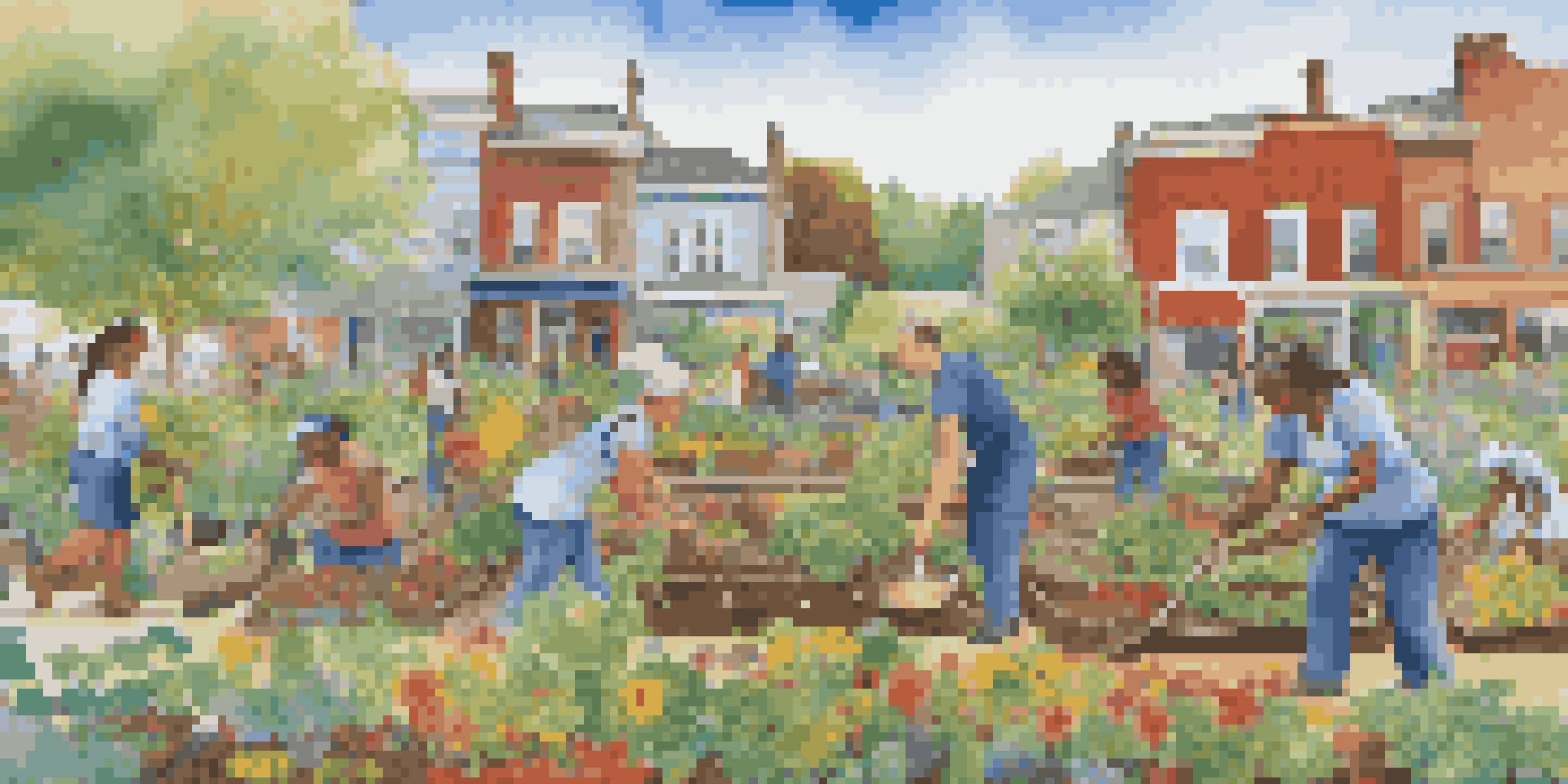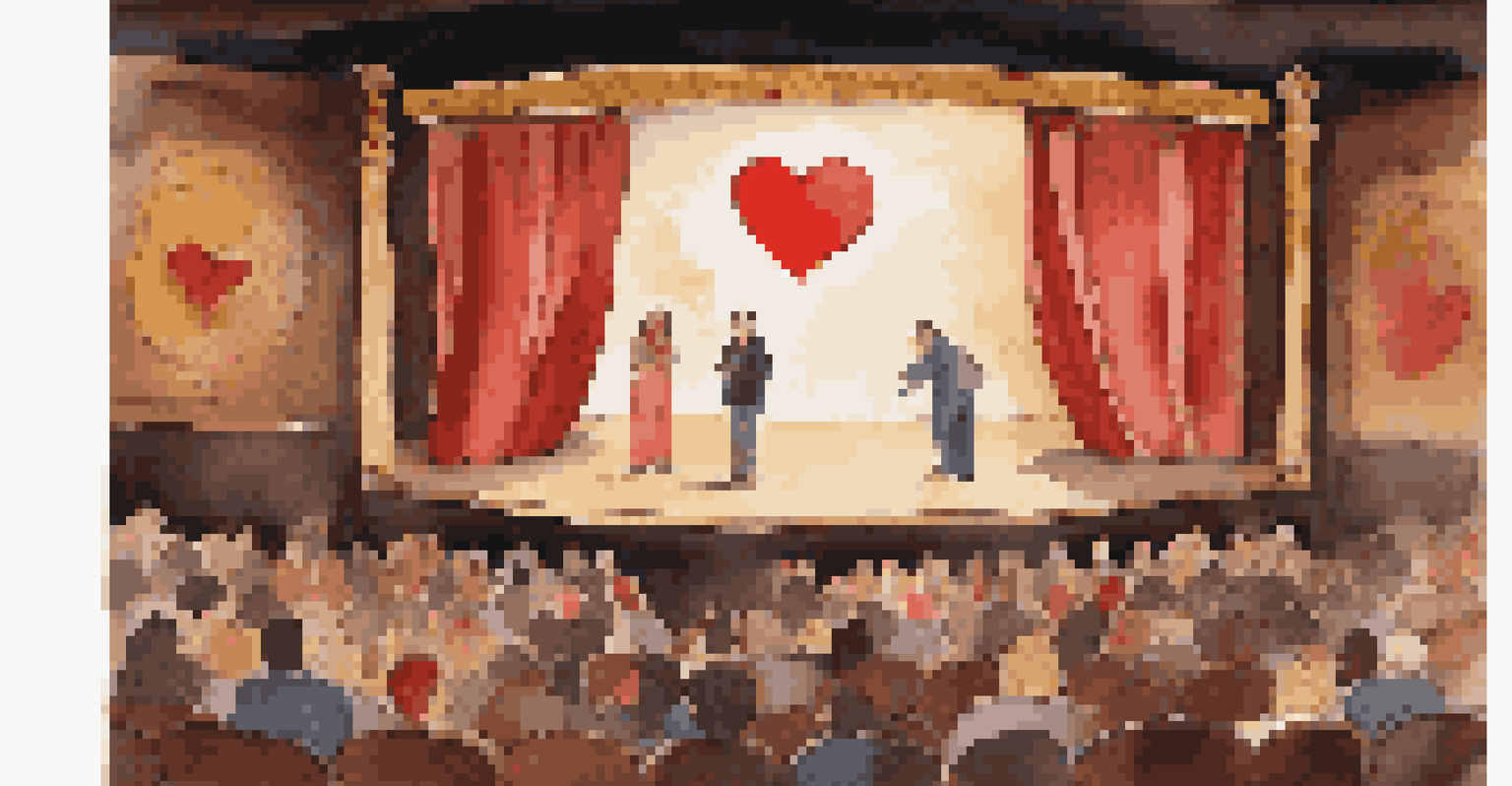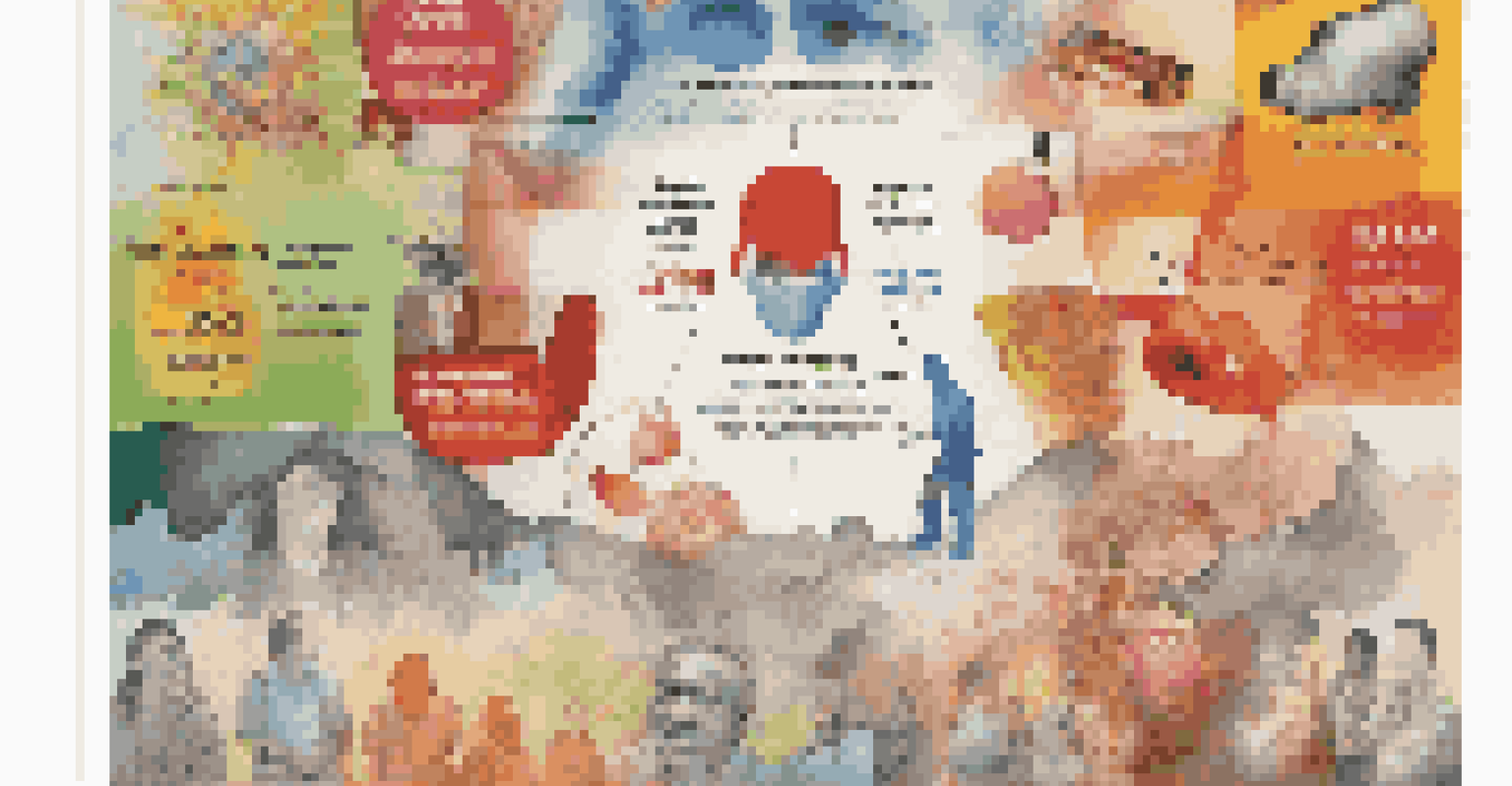Art and Public Health: Lessons from Historical Movements

The Intersection of Art and Public Health: An Overview
Art and public health may seem like unlikely allies, but their intersection has deep historical roots. Throughout history, art has been a powerful tool for communicating health messages and advocating for social change. By examining past movements, we can better understand how creative expression has played a pivotal role in promoting public health initiatives.
Art is not a mirror to hold up to society, but a hammer with which to shape it.
For instance, during the 19th century, the cholera outbreaks led artists to depict the plight of affected communities. These visual narratives not only raised awareness but also prompted public health reforms. This synergy between art and health continues to evolve, reminding us of the potential for creativity to impact our well-being.
As we dive deeper into specific historical movements, we’ll uncover how various art forms have shaped public perceptions of health issues. From murals to performance art, each medium offers unique insights and lessons that resonate even today.
The Mural Movement: Art as a Catalyst for Change
The mural movement of the early 20th century serves as a compelling example of art driving public health awareness. Artists collaborated with communities to create large-scale murals that depicted health issues, social injustices, and the importance of sanitation. These vibrant images were not just decorative; they acted as visual calls to action.

One notable example is the works of Diego Rivera, whose murals illustrated the struggles of the working class and highlighted public health concerns like tuberculosis. By bringing these issues to public spaces, Rivera and his contemporaries effectively engaged audiences who might not have been reached through traditional health campaigns.
Art Drives Public Health Awareness
Art has historically served as a powerful medium for raising awareness about public health issues and advocating for social change.
The legacy of this movement endures, reminding us that art can transcend barriers, fostering dialogue around health topics. Today, we see similar efforts in community art initiatives that address modern health challenges, reinforcing the idea that art remains a vital component of public health advocacy.
The Role of Theater in Public Health Education
Theater has long been utilized as a platform for public health education, using storytelling to convey important health messages. Productions focusing on issues like HIV/AIDS in the 1980s served to destigmatize the disease and promote safe practices. By combining entertainment with education, theater engages audiences emotionally, making messages more relatable and impactful.
The arts are not a luxury; they are a necessity. They are essential to our well-being and our survival as a society.
For instance, plays like 'The Normal Heart' brought the realities of the AIDS crisis to the forefront, sparking conversations that were often avoided in mainstream discourse. This approach not only educated viewers but also encouraged community solidarity and action.
Today, theater continues to play a crucial role in public health initiatives, addressing topics like mental health and addiction. By harnessing the power of performance, we can create a space for dialogue around sensitive issues, ultimately fostering a healthier society.
Visual Arts and Mental Health: A Historical Perspective
Visual arts have a profound impact on mental health, with historical movements showcasing this connection. From the expressionist works of Edvard Munch to the vibrant paintings of Frida Kahlo, artists have used their mediums to explore complex emotions and mental health struggles. These artworks often resonate with viewers, promoting empathy and understanding.
During the early 20th century, art therapy emerged as a formal practice, recognizing the therapeutic potential of creative expression. Institutions began implementing art programs for patients with mental health issues, reinforcing the idea that creativity can be a healing force.
Community Art Projects Empower Health
Community art initiatives foster collaboration and engagement, empowering individuals to take ownership of their health while addressing local disparities.
In contemporary society, the importance of visual arts in mental health remains evident. Community art programs and initiatives aim to provide a creative outlet for individuals dealing with mental health challenges, illustrating how art can foster resilience and well-being.
Public Health Campaigns: Art as a Communication Tool
Public health campaigns have increasingly incorporated art to communicate vital information effectively. Visual elements, such as infographics and posters, can simplify complex health messages, making them accessible to a broader audience. By blending art with data, campaigns become more engaging and memorable.
A prime example is the 'Smoking Kills' campaign, which used stark imagery to convey the dangers of tobacco use. The shocking visuals prompted immediate reactions, raising awareness and inspiring behavioral change. This illustrates how art can serve as a powerful motivator in public health efforts.
As we continue to navigate public health challenges, the integration of art into campaigns will be crucial. By utilizing creative approaches, we can ensure that health messages resonate and inspire action within communities.
Community Art Projects: Bridging Gaps in Public Health
Community art projects play a significant role in addressing public health disparities by fostering collaboration and engagement. These initiatives often involve local artists working alongside community members to create artworks that reflect health challenges specific to their neighborhoods. This collective effort not only raises awareness but also empowers individuals to take ownership of their health.
For example, projects that focus on issues like food deserts or mental health stigma can lead to vibrant murals or installations that spark conversations. These artistic expressions serve as a reminder of the community's resilience and capacity for change, fostering a sense of pride and solidarity.
Storytelling Enhances Health Messages
The storytelling power of art transcends barriers, making health messages more relatable and impactful, which is crucial for effective public health campaigns.
Ultimately, community art projects highlight the importance of inclusivity in public health. By involving diverse voices and perspectives, we can create a more equitable approach to health promotion, ensuring that everyone feels represented and engaged.
Lessons from History: The Future of Art and Public Health
As we reflect on the historical movements that have intertwined art and public health, several key lessons emerge. First, the power of storytelling through art can transcend barriers, making health messages more relatable and impactful. This highlights the need for continued collaboration between artists and health professionals in crafting campaigns.
Additionally, the importance of community engagement cannot be overstated. By prioritizing local voices and experiences, we can create art that resonates deeply with those it aims to serve. This approach not only enhances the effectiveness of public health initiatives but also fosters a sense of belonging and empowerment.

Looking to the future, it’s clear that art will remain a vital element in public health strategies. By embracing creativity and collaboration, we can continue to address health challenges in innovative ways, ultimately building healthier and more resilient communities.